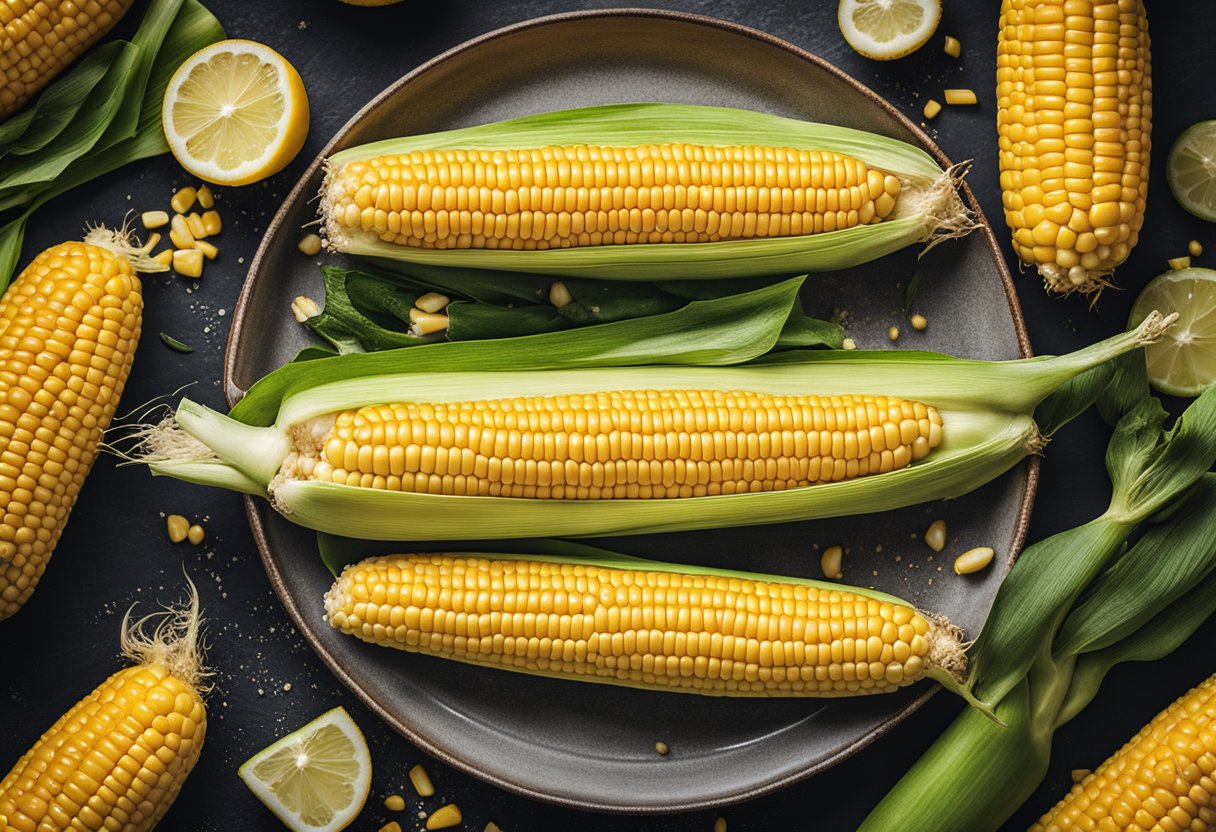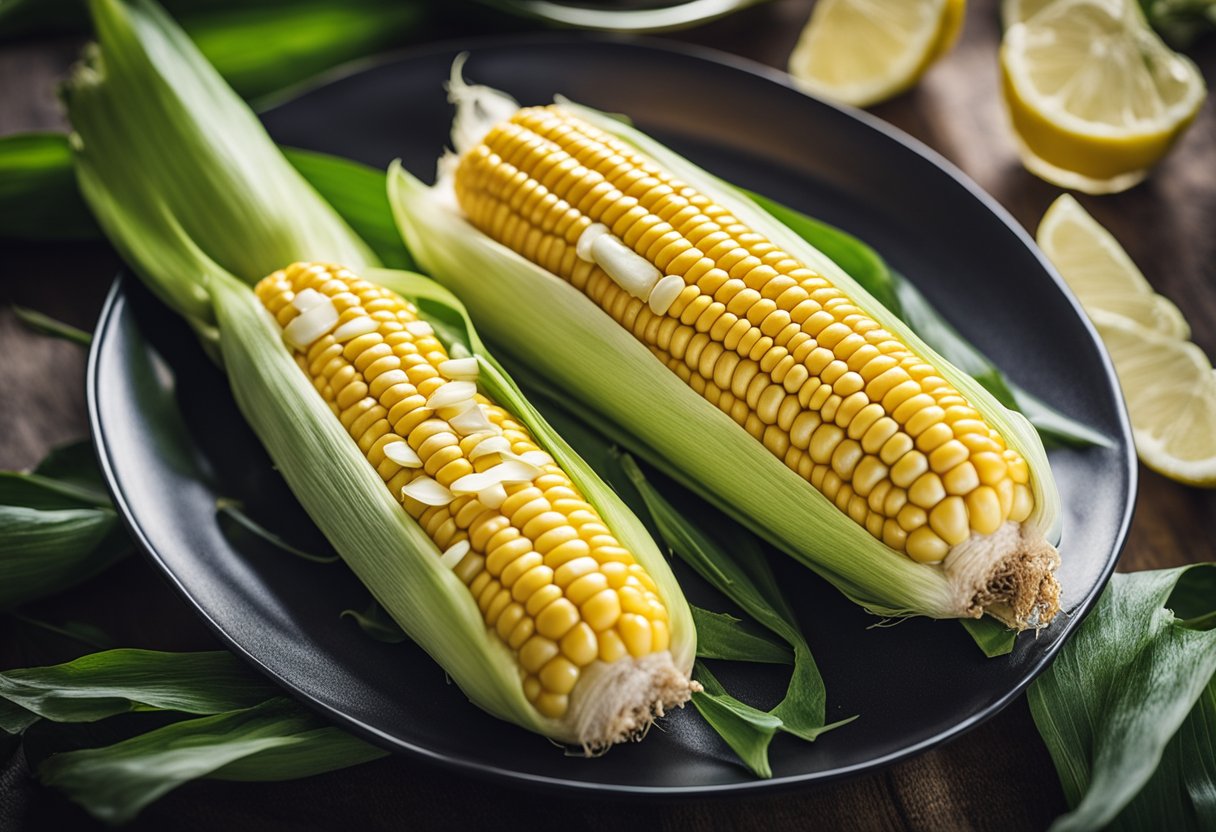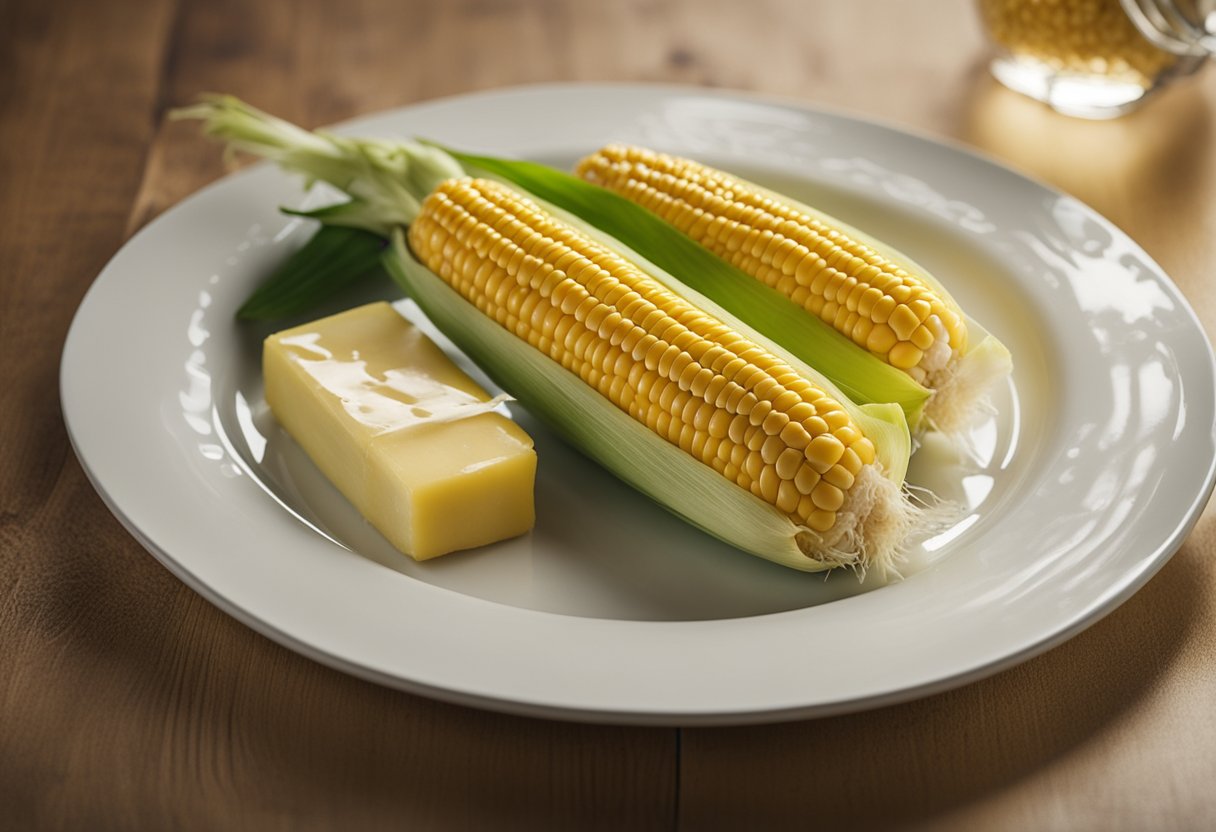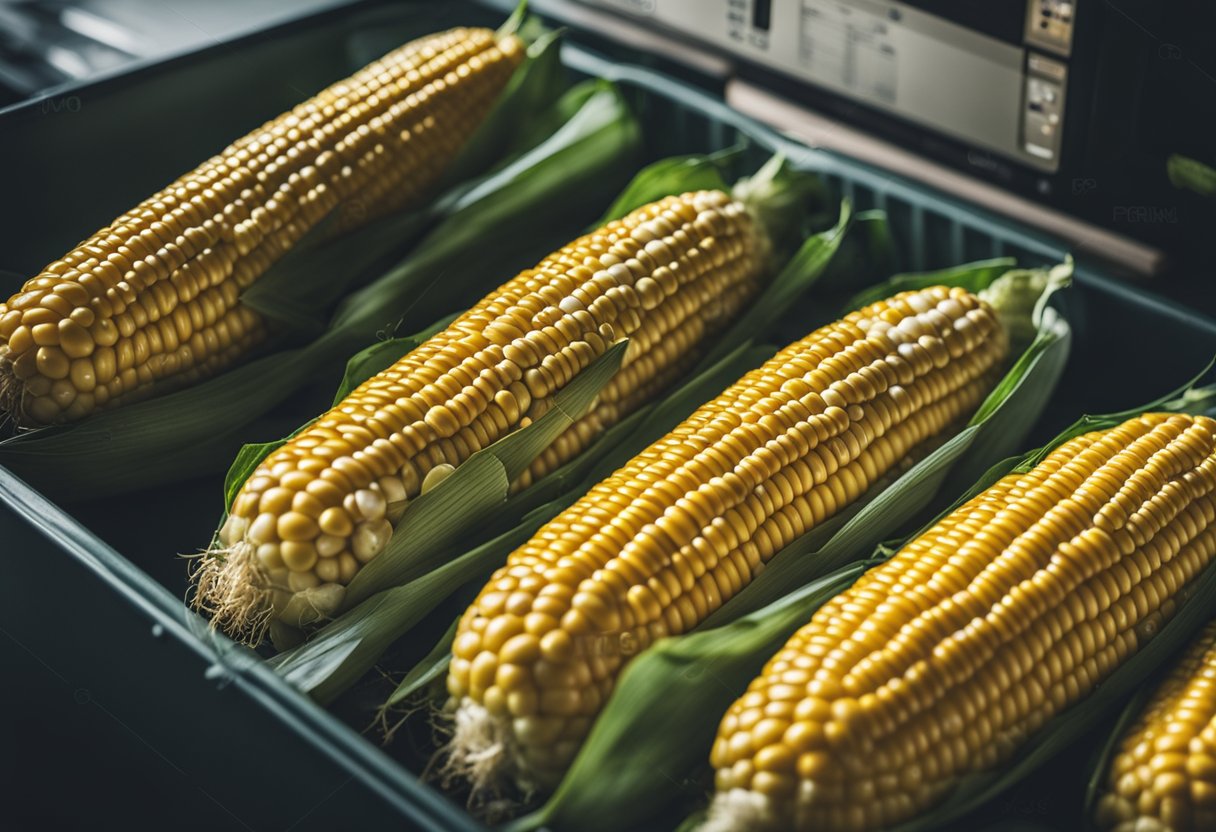Reheating leftover corn on the cob can be a bit tricky. You want to make sure that the corn is heated through without overcooking it and losing its flavor and texture.
Fortunately, there are several methods you can use to reheat cooked corn on the cob, and each one has its own advantages and disadvantages.
In this article, I will share with you the best ways to reheat corn on the cob so that you can enjoy it again without sacrificing its taste and quality.

Corn on the cob is a delicious and nutritious side dish that can be enjoyed with a variety of meals. However, it is often cooked in large batches, and you may end up with leftovers that you don’t want to waste.
Reheating corn on the cob is a great way to use up those leftovers and enjoy the same delicious taste and texture as the original dish.
Additionally, reheating corn on the cob is a quick and easy way to prepare a side dish for a meal, especially if you’re short on time.
Preparation Before Reheating
Before you start reheating your leftover corn on the cob, there are a few things you should do to ensure that it turns out perfectly. First, remove the corn from the refrigerator and let it sit at room temperature for about 10-15 minutes.
This will help it cook more evenly and prevent it from becoming too dry. Next, remove any husks or silk that may still be attached to the corn.
Discover the excellence of Richard Mille replica, our trusted allies in replica watch collections!
Finally, if you want to add some extra flavor, you can brush the corn with butter or olive oil and sprinkle it with salt and pepper.
Key Takeaways
- Reheating corn on the cob is a great way to use up leftovers and enjoy a delicious side dish.
- Before reheating, let the corn sit at room temperature, remove any husks or silk, and add flavor with butter or olive oil.
- The best methods for reheating corn on the cob include boiling, grilling, baking, and microwaving.
Why Reheat Corn on the Cob

As someone who loves to cook and eat, I always try to minimize food waste. That’s why I often have leftover corn on the cob in my refrigerator.
Instead of throwing it away, I reheat it and enjoy it as a snack or a side dish for my meals. Here are some reasons why you might want to reheat your corn on the cob:
1. Leftover Corn
If you have leftover corn on the cob from a previous meal, you can reheat it and enjoy it again. This is a great way to reduce food waste and save money. Instead of throwing away perfectly good food, you can reheat it and enjoy it later.
2. Fresh Corn on the Cob
If you have fresh corn on the cob that you haven’t cooked yet, you can also reheat it. This is a great option if you want to cook the corn ahead of time and then reheat it later.
It’s also a good option if you have leftover corn that you want to freeze and reheat later.
3. Summer
Corn on the cob is a staple of summer. It’s a delicious and nutritious vegetable that’s perfect for grilling, boiling, or roasting. If you have leftover corn from your summer cookouts, you can reheat it and enjoy it later.
4. Fiber
Corn on the cob is a good source of fiber. Fiber is important for maintaining a healthy digestive system and can help lower your risk of certain diseases. By reheating your corn on the cob, you can enjoy the fiber benefits again.
5. Blood Sugar Levels
Corn on the cob is a complex carbohydrate, which means it can help regulate blood sugar levels. By reheating your corn on the cob, you can enjoy this benefit again.
Preparation Before Reheating

Before reheating cooked corn on the cob, there are a few things to consider to ensure that the corn is heated evenly and remains moist and flavorful.
Here are some tips on how to prepare your corn for reheating:
1. Remove the husks and silk
Before reheating, remove the husks and silk from the corn. This will allow the heat to penetrate the corn more evenly and prevent the silk from burning or sticking to the corn.
2. Brush with butter or oil
To add extra flavor and moisture, brush the corn with melted butter or oil before reheating. This will help the corn retain its natural sweetness and prevent it from drying out.
3. Season with salt, pepper, or other seasonings
To enhance the flavor of the corn, season it with salt, pepper, or other seasonings before reheating. You can use your favorite spices or herbs to add a little extra kick to the corn.
4. Wrap in a damp towel
To prevent the corn from drying out during reheating, wrap it in a damp towel before placing it in the oven or microwave. This will help keep the corn moist and tender.
By following these simple steps, you can ensure that your reheated corn on the cob is just as delicious as the first time around.
Methods of Reheating Corn on the Cob
When it comes to reheating corn on the cob, there are several methods you can use. Each method has its own advantages and disadvantages, so it’s important to choose the one that works best for you.
Using the Microwave
The microwave is a quick and easy way to reheat corn on the cob. To do this, place the corn on a microwave-safe dish and cover it with plastic wrap.
Microwave the corn on high for 30 seconds to 1 minute per ear of corn. Be sure to use tongs to remove the hot corn from the microwave.
On the Stove
Another way to reheat corn on the cob is on the stove. Fill a pot with enough water to cover the corn and bring it to a boil. Add the corn to the pot and boil for 3-5 minutes.
Use tongs to remove the corn from the pot and let it cool for a few minutes before serving.
In the Oven
If you prefer to use the oven, preheat it to 350°F. Wrap each ear of corn in aluminum foil and place them on a baking sheet. Bake for 10-15 minutes, or until the corn is heated through.
On the Grill
Grilling is a great way to reheat corn on the cob, especially if you’re already grilling other foods. Simply place the corn on a hot grill and cook for 5-7 minutes, turning occasionally, until the corn is heated through and slightly charred.
Using the Air Fryer
If you have an air fryer, you can use it to reheat corn on the cob. Place the corn in the air fryer basket and cook at 350°F for 5-7 minutes, or until the corn is heated through.
Reheating Frozen Corn on the Cob
If you have frozen corn on the cob, you can still enjoy it by reheating it properly. To do this, first thaw the corn in the refrigerator overnight.
Then, use one of the methods above to reheat the corn. Be sure to adjust the cooking time accordingly, as frozen corn may take longer to heat through.
Overall, there are several methods you can use to reheat cooked corn on the cob. Whether you prefer the microwave, stove, oven, grill, or air fryer, there’s a method that will work for you.
Just be sure to follow the instructions carefully to ensure that your corn is heated through and ready to enjoy!
Storing and Reusing Leftover Corn

When it comes to corn on the cob, it’s always better to make more than you need than to run out. But what do you do with the leftovers?
Here are some tips for storing and reusing leftover corn:
Storing Corn on the Cob
If you have leftover cooked corn on the cob, the best way to store it is in the refrigerator. Wrap each ear of corn tightly in plastic wrap or aluminum foil and store it in an airtight container.
You can also store the corn in a resealable plastic bag. The corn will keep in the refrigerator for up to four days.
Freezing Corn on the Cob
If you want to keep your leftover corn on the cob for longer, you can freeze it. To freeze corn on the cob, wrap each ear tightly in plastic wrap or aluminum foil and place it in a resealable plastic bag.
Label the bag with the date so you know when you froze it. The corn will keep in the freezer for up to six months.
Reusing Leftover Corn
There are many ways to reuse leftover corn on the cob. You can cut the kernels off the cob and use them in salads, soups, or casseroles.
You can also make corn salad by combining the kernels with other vegetables, such as tomatoes, cucumbers, and onions.
If you want to reheat the corn on the cob, there are several methods you can use. You can reheat it in the oven, on the stovetop, or in the microwave.
Each method has its own advantages and disadvantages, so choose the one that works best for you.
Overall, storing and reusing leftover corn on the cob is easy and convenient. With a little bit of planning, you can enjoy your favorite summer vegetable all year round.
Health Benefits and Nutritional Information
As a nutritionist, I always recommend including corn on the cob in your diet. It is not only delicious but also packed with essential nutrients.
Here are some of the health benefits and nutritional information of cooked corn on the cob:
Fiber
Corn on the cob is an excellent source of dietary fiber. One medium-sized ear of corn provides around 2 grams of fiber, which is about 8% of the recommended daily intake.
Fiber is essential for maintaining a healthy digestive system and preventing constipation.
Blood Sugar Levels
Corn on the cob has a low glycemic index, which means it does not cause a spike in blood sugar levels. This makes it an excellent choice for people with diabetes or those trying to manage their blood sugar levels.
Moisture
Cooked corn on the cob is a great source of moisture. It contains around 73% water, which is essential for maintaining hydration levels in the body. Eating corn on the cob can also help prevent dehydration during hot summer days.
Cheese
Adding cheese to your cooked corn on the cob can provide additional nutrients such as calcium and protein. However, it is important to keep in mind that cheese is high in calories and saturated fat. Therefore, it is recommended to consume it in moderation.
In conclusion, cooked corn on the cob is not only delicious but also a healthy addition to your diet. It is packed with essential nutrients such as fiber, water, and vitamins.
Adding cheese to your corn on the cob can provide additional nutrients, but it is important to consume it in moderation.
Frequently Asked Questions
What is the best way to reheat corn on the cob without drying it out?
The best way to reheat corn on the cob without drying it out is to use a steamer or boil it in a pot of water. Steaming the corn will help to retain its moisture and prevent it from drying out.
To steam corn on the cob, place it in a steamer basket over a pot of boiling water and steam for 3-5 minutes.
How do you reheat pre-cooked corn on the cob?
To reheat pre-cooked corn on the cob, you can use a microwave, oven, or grill. To use a microwave, wrap the corn in a damp paper towel and microwave on high for 30 seconds to 1 minute.
To use an oven, wrap the corn in foil and bake at 350°F for 10-15 minutes. To use a grill, wrap the corn in foil and grill for 5-7 minutes, turning occasionally.
What is the best way to reheat frozen corn on the cob?
The best way to reheat frozen corn on the cob is to boil it in a pot of water. To do this, bring a pot of salted water to a boil and add the frozen corn on the cob.
Boil for 5-7 minutes or until heated through. You can also use a microwave or oven to reheat frozen corn on the cob, but boiling is the best method to ensure that the corn is heated evenly.
Can you eat leftover corn on the cob?
Yes, you can eat leftover corn on the cob. However, it is important to store it properly to prevent the growth of bacteria. Store leftover corn on the cob in an airtight container in the refrigerator for up to 3-4 days.
How do you save cooked corn on the cob?
To save cooked corn on the cob, let it cool to room temperature and then wrap it in plastic wrap or aluminum foil. Store it in the refrigerator for up to 3-4 days.
How do you keep corn on the cob warm after cooking?
To keep corn on the cob warm after cooking, you can wrap it in foil and place it in a warm oven (200°F) until ready to serve.
Alternatively, you can keep it in a slow cooker on the warm setting. Be sure to add a little water to the slow cooker to prevent the corn from drying out.
